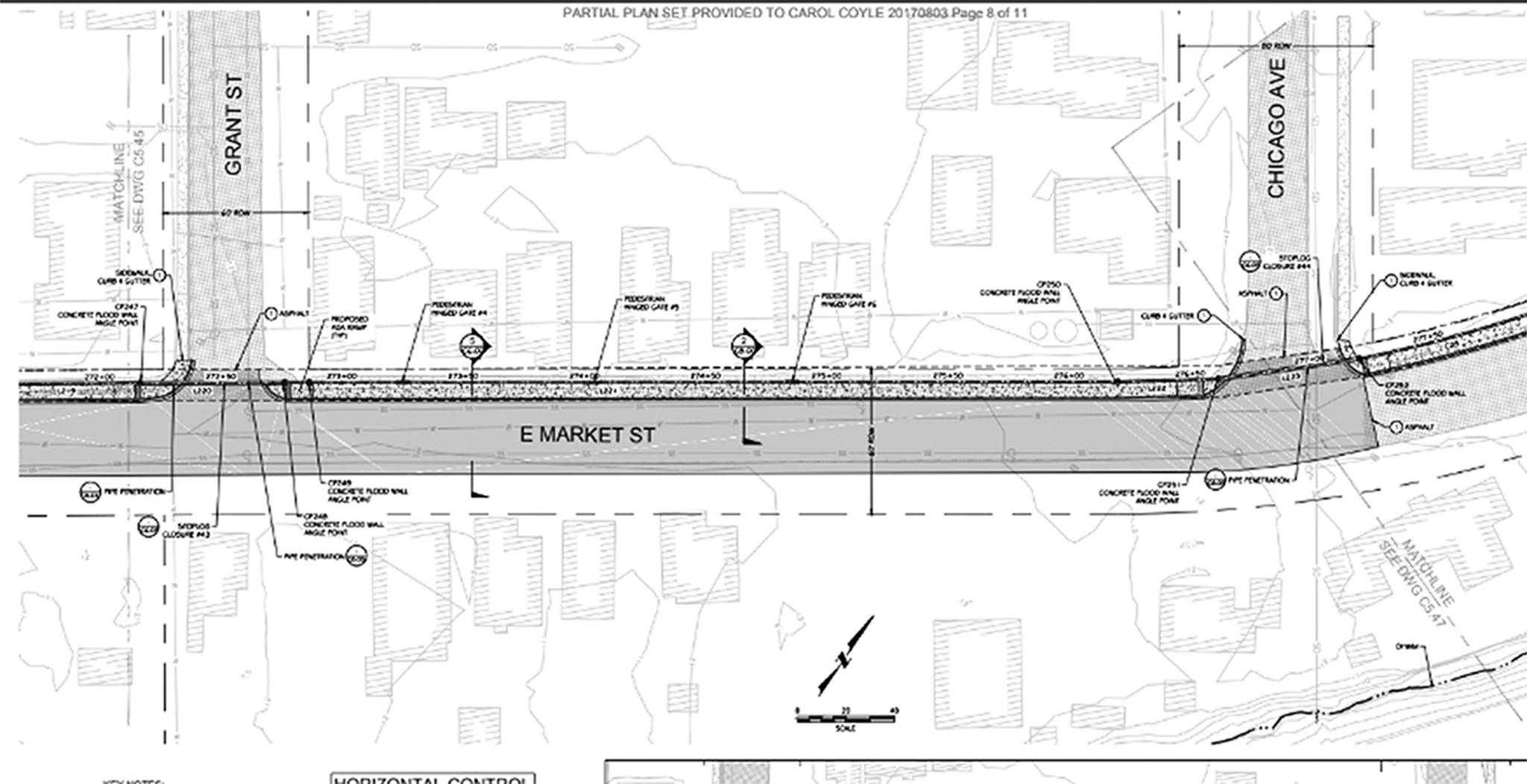With meetings lined up this week to resume public discussion of the North Shore Levee Project, some are concerned that their houses sit outside the current planned area to build the levee, which would still leave them vulnerable during a flood.
The North Shore Levee Project is intended to remove more than 3,100 properties in Aberdeen and Hoquiam from the federal flood hazard area, by building a 5.7 mile-long levee along waterfronts and streets. It has already received full design and permitting funds.
Carol Coyle, who lives with her husband on the south side of East Market Street in Aberdeen, is concerned because her house lies just outside the proposed levee wall. She wishes the levee could be redesigned so it follows the river. After looking at blueprints, Coyle said she guesses there will be 50 to 70 different properties left in the flood zone in her neighborhood along the west bank of the Wishkah River that are outside the levee.
“We’d like them to move the levee next to the river, because otherwise you’re going to trap us during a flood and endanger us,” said Coyle. “When you get down to the Young Street Bridge, they’re cutting off Madison Street completely, and there are quite a few homes down there.”
Coyle said many of her neighbors she has spoken with are upset that the levee leaves them outside its protection.
In order to address questions and concerns, the city will be hosting community meetings Thursday at 7 p.m. and Saturday at 10 a.m., both at the Rotary Log Pavillion in Aberdeen. Aberdeen City Engineer Kris Koski, along with others working on the project, sent out letters to the property owners who are unprotected by the levee asking they come to the meeting Thursday, which will focus more so on the unprotected areas along the river in North Aberdeen.
Koski and Hoquiam City Aministrator Brian Shay both said it would have been extremely difficult, in terms of permitting and construction, to have the levee follow the river.
“You have a high concentration of structures that are extremely close, if not practically within the river,” said Koski. “That means when you go through the design criteria, all sorts of red flags go up, and you really question whether you can build the levee at all.”
According to Shay, some of the houses have no more than 10 feet between them and the water.
“It’s far more challenging to get permits for a project when you’re working, in a sense, within the water, versus on the shoreline,” he said.
Koski said he has heard public concerns that flooding would be worse for outside houses after the levee is put up. But he said the difference is extremely minimal, with their studies finding it would affect coastal flood levels by a quarter-inch on average.
He said construction would hopefully begin sometime in 2019.



